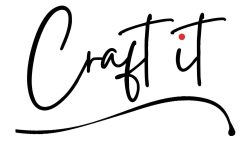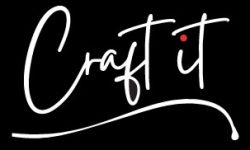BY BETT KINYATTI
I am at Toi Market hunting for a bedside rug. (Can I still refer to it as a bedside rug if I intend to place it at the foot of the bed? I think not.)
Today is Saturday, the day most purveyors here ‘open the bales’ they have just brought in from Gikomba market. Gikomba is like a sin city that never sleeps; most about anything second-hand in Nairobi traces its source to Gikomba.
I am the stall of some Tanzanian chap called Dennis. Skinny as a reed, his tight t-shirt against his ribs reminds me of the word ‘thorax’. Dennis has a Kiswahili accent so heavy you can see it weighing his shoulders down.
His congested stall is no bigger than a toilet stall. The noon sun is directly above our foreheads but it is dinghy when Dennis and I stand inside to go through his selection of new rugs. They have the distant whiff of damp Europe. As though you would see them as interior decor props on that Netflix indie series, ‘Dark’.
I am buying a bedside rug from Toi Market because the rugs here sit in the intersection of my Venn diagram. The Venn diagram I drew to help me narrow down my purchase based on functionality, price point, aesthetics and tactility. More so functionality.
I am a 35-year-old urban mum with a toddler who is yet to understand that her muddy bike should only be ridden outside, and that bowls of beef stew should not leave the dining table.
I could buy a rug from the tile and carpet people on Mombasa Road, as I did for the living room. And dining room. The rugs here are imported from Asia. They are woven using artificial threads in large factories that spew them by the second. They weave them in all sizes and all colours, any motif your mind can imagine.
These rugs are built to last. I can tell you this because they have survived my toddler and all those riotous guests we are constantly hosting in house parties and family get-togethers. They have survived the harsh detergents Nanny Viv scrubs them with. The purchase does not leave you bankrupt, either.
Thing is, you cannot convert a living room rug to a bedside rug. (OK, well you can. Really. You can do anything you want.) The rugs were not built for the function of these two spaces.
The store stocks bedside rugs. I did not want them, though, because they were neither soft under my feet nor playful with their motifs. Yet at less than 5,000 bob, the price was right.
The other option would have been to have a bedside rug handmade for me. One with custom colours and custom design. There are boatfuls of such weavers along Ngong Road.
The weavers set up in their workshops large wooden frames and weave the rugs here using a traditional Ethiopian craft. This craft was taught as a vocational skill here in Kenya, to financially empower communities in low-income areas.
Some of the rugs are woven using cotton threads, most from 100 per cent natural sheep’s wool. The wool is harvested from sheep farmed in Kinangop, Limuru and Narok. The wool balls are span into wool threads for weaving. The threads are then washed by hand, dyed for a variety of colours and dried in direct sunlight.
Weaving the rugs by hand is an intricate time-intensive task. (But it is beautifully soothing to watch. Goodness. The weavers’ hands are driven by a muscle memory that turns this craft into an artsy dance of the gods.) The intricacy of weaving and the cost of natural wool turn the purchase of a bedside rug into a small financial investment.
You could shake hands with the person who wove that rug, though – you can hear in his fingers the echo of every knot he tied and every thread he wefted. There is a story to the rug. And you are not just buying this story, you are also taking this weaver’s child to school.
Their bedside rugs measuring about two and a half by four feet sell for between 5,000 to 8,000 bob. Much more for the more intricate patterns. You can use both sides of the rug, though. Something like happy hour in the bar – a buy-one-get-one-free offer. Your toddler spills hot chocolate on one side of the rug, and you simply turn it over and carry on with life.
My hunt is what brings me here to Dennis’ stall at Toi Market. The rugs of the bale he has just opened are like a very heavy, very soft blanket. They have constellations of little anti-slip dots beneath them; they look like something someone in the US has patented.
The motifs leave me spoilt for choice – he has them in polka dots and zebra print, kitschy floral and clean contemporary lines. I settle for a burnt orange one with a mix of tribal and geometrical shapes in off white, olive green and navy blue.
I have to be honest, it has plenty of character I love but it is a tad too busy to look at. Something about it says Native Navajo Red Indian rug. It also has some boho vibes. Hmm. I dunno. This one will take some getting used to. Beautiful thing is, it measures four by six feet – same dimensions as my dining room rug but costs a fraction.
I am headed back home now, a happy mum with a happy rug.
I only hope I will not think of the word ‘thorax’ each time my feet touch it.
An edited version of this story first ran in my Crafts and Culture column in the Saturday Nation
3













